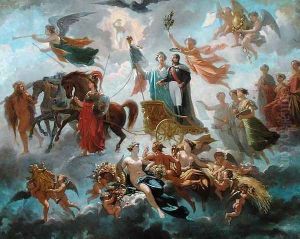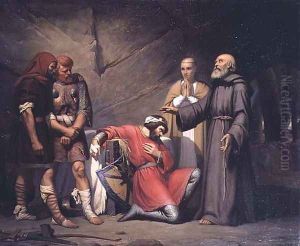Guillaume-Alphonse Harang Cabasson Paintings
Guillaume-Alphonse Harang Cabasson, often overlooked in mainstream art history, was a French artist whose contributions to the 19th century European art scene were significant, albeit not widely recognized in contemporary circles. Born in 1800, in a period of great social and political upheaval in France, Cabasson's early life was marked by the transformative effects of the French Revolution and the Napoleonic Wars. These events would later influence his artistic themes and styles, as he often depicted scenes of social struggle and human resilience in his works.
Cabasson trained at the prestigious École des Beaux-Arts in Paris, where he was influenced by the Romanticism movement, a dominant trend in early 19th-century European art. His work, however, also exhibited characteristics of the emerging Realist movement, which sought to depict everyday life and society with a new level of honesty and detail. Cabasson was adept in both painting and sculpture, but it was his paintings that garnered him more recognition during his lifetime.
Throughout his career, Cabasson struggled for critical acclaim, competing with contemporaries such as Eugène Delacroix and Jean-Auguste-Dominique Ingres. Despite the challenges, he managed to exhibit his works at several Salons in Paris, the official art exhibitions of the Académie des Beaux-Arts in France. His subjects varied from historical and mythological scenes to landscapes and portraits, demonstrating his versatility as an artist.
Cabasson's works were characterized by their emotional depth and technical precision. His use of color and light was particularly noted for its ability to evoke mood and atmosphere. Despite his talent, Cabasson's work did not achieve the lasting fame of some of his contemporaries. He passed away in 1870, leaving behind a body of work that, while not widely known, is appreciated by art historians and collectors for its contribution to the development of 19th-century French art.
After his death, Cabasson's works were largely forgotten until a resurgence of interest in the late 20th century. Today, his paintings can be found in several French museums and in private collections. His life and work represent the challenges faced by many artists of his time, who navigated the complex terrain of artistic movements and political upheaval to create enduring works of art.

